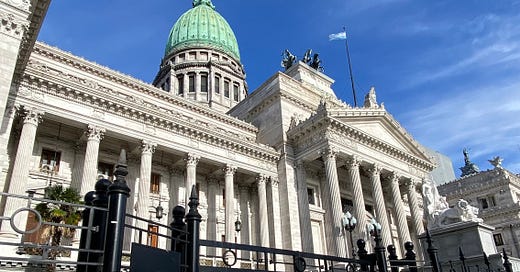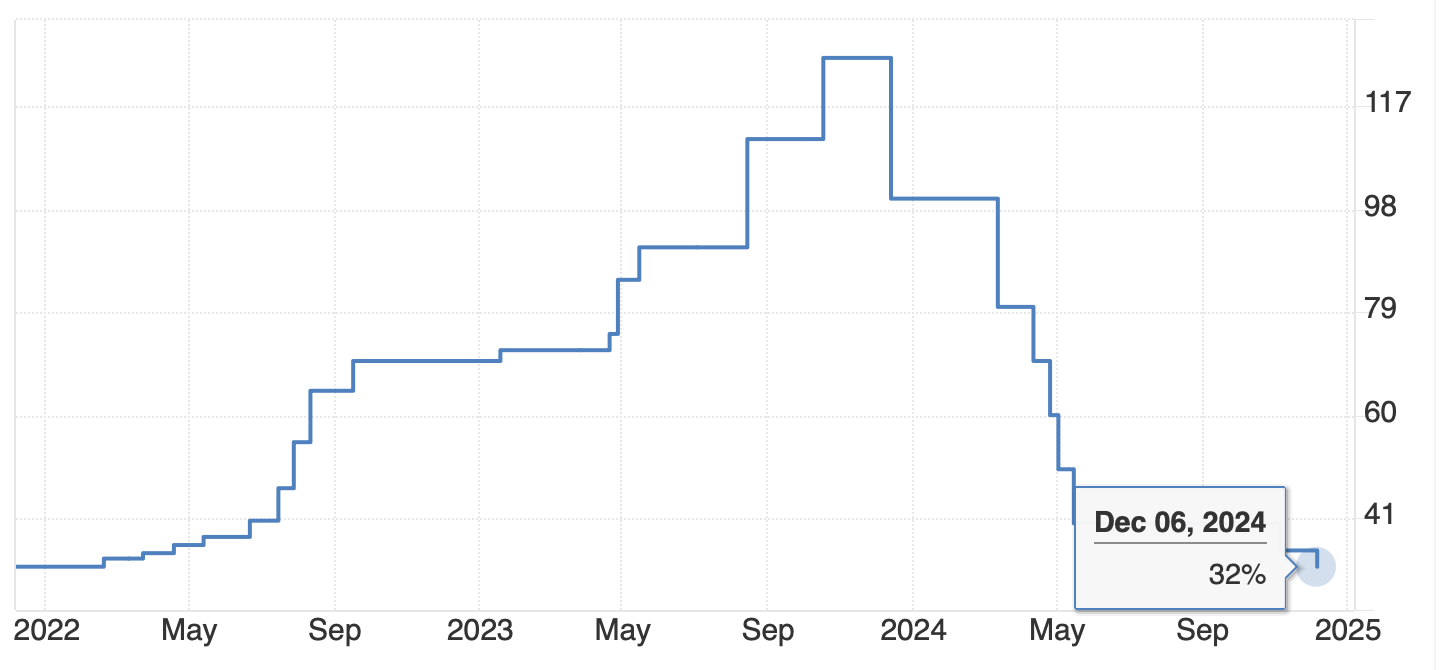On December 23, 2023, a movie ticket cost $6.91 CAD. 11 months later, on November 24, 2024, that same movie ticket cost me $13.35 CAD. The cost of the ticket, along with most other daily purchases, had roughly doubled. What on earth happened in Argentina?!
The first reason that came to mind was that the currency rate just doubled. This may seem somewhat true. The official conversion rate went from 400 pesos to 1028 pesos in the past year.
But when I look at the rate set by Western Union, which I use to send myself money a year ago and now, the rate is practically the same. A year ago, $1 CAD got you 758 pesos. Now, $1 CAD gets you 785 pesos. So the exchange rate doesn’t explain why life is more expensive.
Prices in stores haven’t risen either. A Neapolitan pizza from Siamo Nel Forno was 14k pesos in 2023, and is 15k pesos in 2024. We thus have a situation where the price of things increased slightly and the currency exchange rate increased slightly, but the cost has nearly doubled. Why is this?
Other explanations aren’t helpful either. This video for example identifies four reasons that there are price differences between currencies: inflation, interest rates, foreign investments, and import/export rates. It goes something like this:
Before, currencies were valued using gold. Now they’re valued based on supply and demand. Four main factors affect the supply and demand for money.
Inflation. High inflation means less demand for the money. Low inflation means more demand. Inflation has gone down in Argentina, but is still high. In December 2023, the month over month inflation rate was 25.5%. It is now closer to 2.5%. However, this is quite high compared to countries like Canada that almost always have MOM inflation rates below 1% and sometimes below 0% (the average is ~0.4%). So inflation doesn’t seem to fully explain it because there’s still really high inflation.
Next is interest rates. High interest rates stimulate demand for the currency, raising its price. But Argentina’s interest rate is currently around 30%, which is an all-time low. So this doesn’t explain it either.
Foreign investments in the country also increase demand for the currency, because investors who want to build buildings and hire workers need to do so using the local currency. But there hasn’t been a ton of foreign investment within 2024, not enough to explain a 2x in prices:
That leaves imports and exports. When a country exports lots of products, foreigners need to buy those products using the local currency. So exports generate demand for the local currency. Unfortunately, I wasn’t able to find public data on Argentina’s 2024 imports and exports. But when it’s released, I would not be surprised to find out that they’ve increased their exports.
In any case, leave a comment if you have any other suspicions about why Argentina is more expensive for gringos now!







